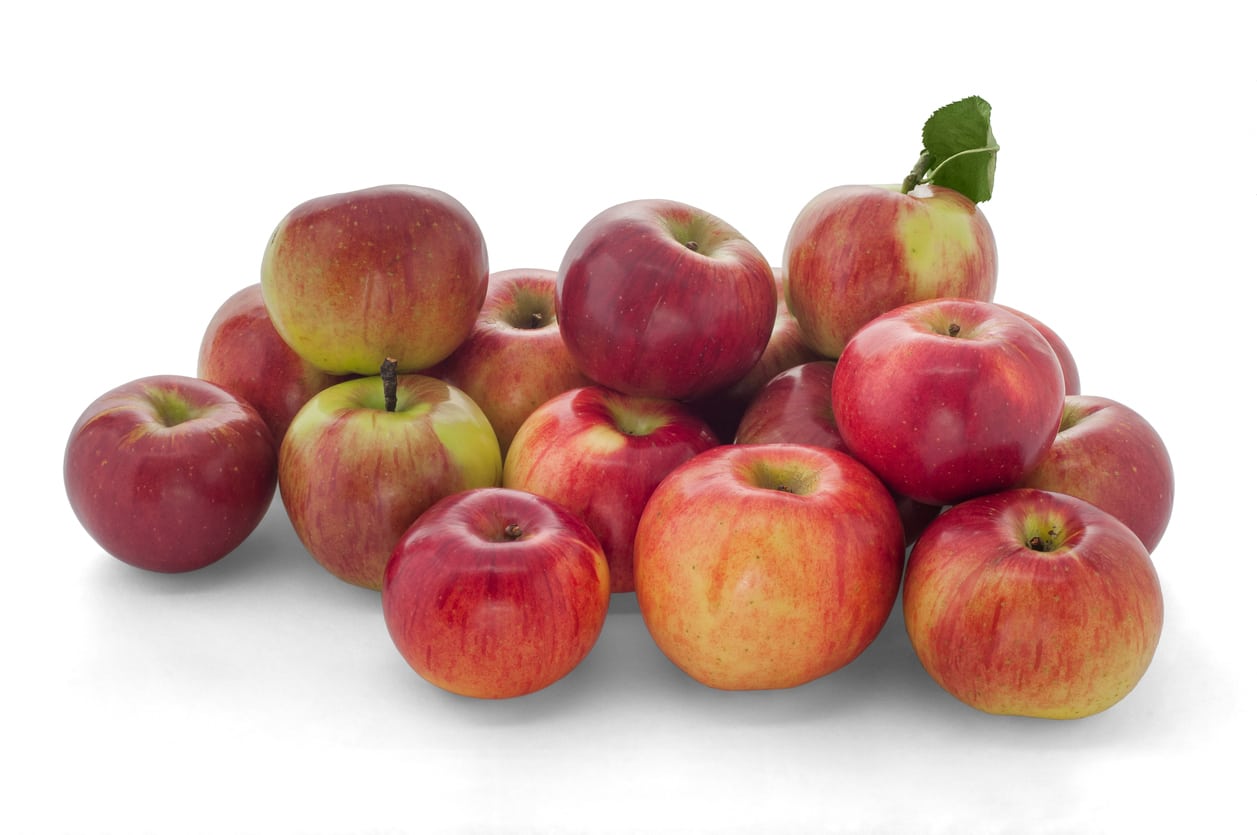Idared Apple Info – Learn How To Grow Idared Apple Trees At Home


When you think of produce from Idaho, you probably think of potatoes. In the late 1930's though, it was an apple from Idaho that was all the rage amongst gardeners. This antique apple, known as Idared, has become a rare find in nurseries and garden centers but is still a favorite apple for baking. Continue reading to learn how to grow Idared apple trees.
Idared Apple Info
The popular apple trees Jonathan and Wagener are the parent plants of Idared apples. Since their introduction in the late 1930's, Idared apples also had offspring, the most notable being Arlet and Fiesta. Idared produces medium sized, round apples with green skin that is heavily streaked with red, especially on the sides facing the sun. The skin can sometimes be a little thick, requiring peeling before eating. The flesh is a white to cream color with a sweet, yet slightly tart flavor. It is also crisp and finely grained, keeping its shape well when cooked. Idared was very popular in its day for the long storage life of about six months, and flavor that improves the longer it is stored.
How to Grow Idared Apple Trees
Idared apple trees are spur-bearing and hardy in zones 4 through 8. They prefer a rich, loamy, well-draining soil. Plant Idared apple trees in full sun where they’ll have room to grow to their average 12 to 16 feet (4-5 m.) height and width. Idared apple trees are often pruned annually to keep them about 8 feet (2 m.) tall for easy harvest and maintenance. They can also be trained into espaliers. From seed, Idared can produce fruit in two to five years. They produce their fragrant, white apple blossoms early but fruit is harvested late, usually in fall around October to early November. When growing Idared apples, you will need to have another nearby apple for pollination, as Idared apples are self-sterile. Recommended pollinators for Idared apples include:
- Stark
- Granny Smith
- Spartan
- Red Windsor
- Grenadier
Borders or berms of pollinator attracting plants are beneficial to have near small fruit tree plantings. Chamomile is also a recommended companion plant for apples.
Sign up for the Gardening Know How newsletter today and receive a free copy of our e-book "How to Grow Delicious Tomatoes".

Darcy is a former contributor to Gardening Know How. She is a professional landscape designer and gardening writer with experience in plant sales. An avid gardener, Darcy has a passion for sharing practical tips to help others grow.